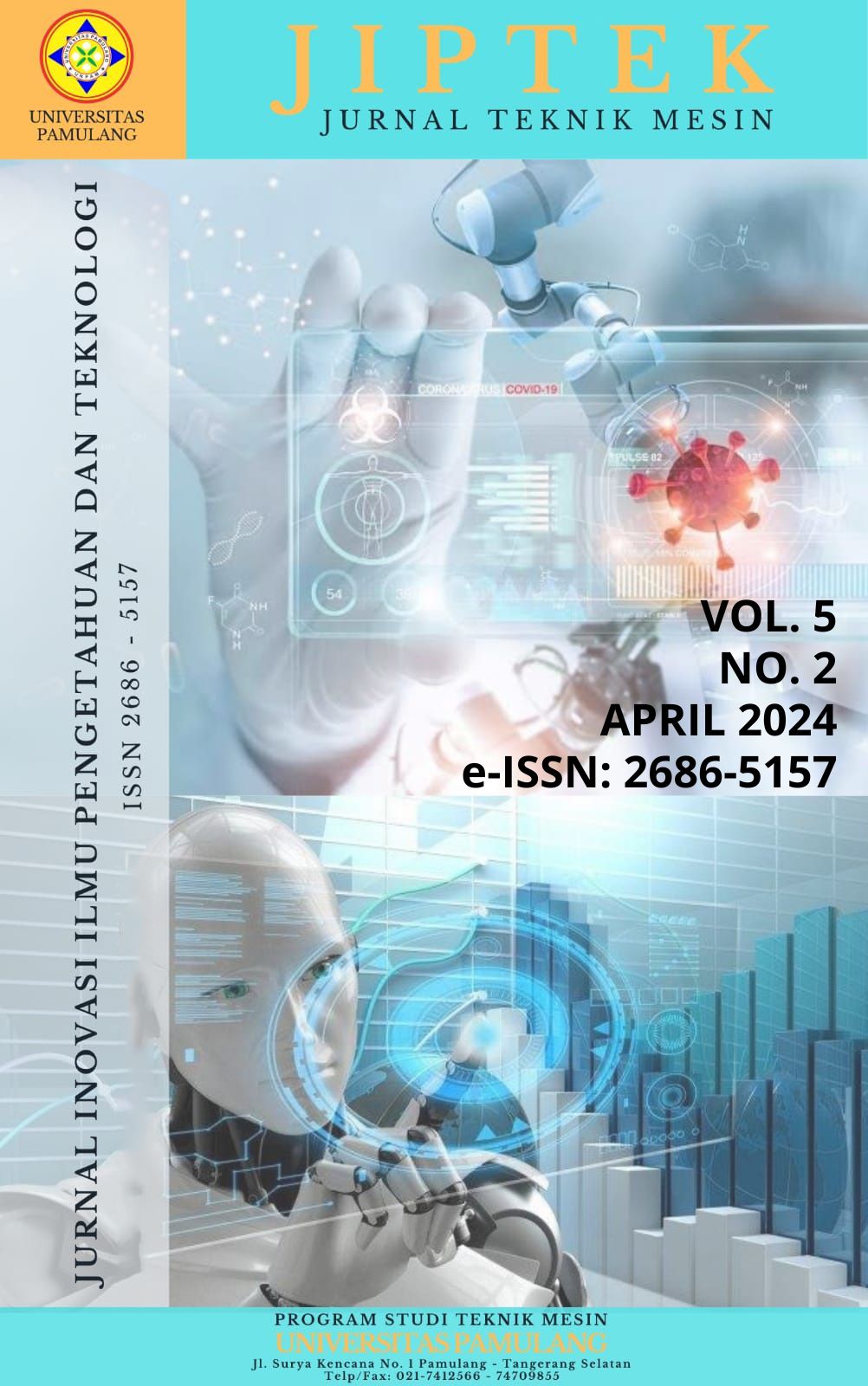Disain dan Analisa Rangka Belt Conveyor Pemilah Manual Kapasitas 8 Ton m3/jam
DOI:
https://doi.org/10.32493/JIPT.v5i2.40077Keywords:
Design, Conveyor Belt, Frame, Safety FactorsAbstract
A manual sorting conveyor belt is a machine that functions to move raw materials from one place to another and sort the raw materials conventionally. To make a manual sorting belt conveyor machine, a construction is needed, namely a frame that functions as a support to support all components such as the belt, roller, hopper, output and gravity roller conveyor. The frame material to be used must have mechanical properties that are sturdy, strong and resistant to vibrations in the machine when operated. To obtain maximum value in designing a conveyor belt machine, a planning concept is needed according to the needs and materials to be used. In this research, design and analysis were carried out using Solidworks 2020 software with ASTM A36 Steel material with an accepted static load of 81340 N from the component weight. The results obtained in the design include the design of the conveyor belt frame. The simulation results with a load of 81340 N were obtained from the Von misses simulation on the conveyor frame resulting in a max value of 5.27 N/mm² and a min of -36.72 N/mm² with a deformation scale of 10, Analysis of the displacement simulation on the conveyor frame with a load of 81340 N produces a max value of 10.25 mm and a min of 0.00 mm with a deformation scale of 10. Analysis of the safety factor simulation on the conveyor frame with a load of 81340 N produces a max value of 8.65 x 106 and min 1.5 so that the manual sorting belt conveyor machine design is declared safe to use. The comparison between the simulation results and the calculation results has an error percentage including von Mises stress of 2%, Displementation of 7%, and Safety Factor of 6% so that the simulation and calculation results are declared accurate.
References
[1] S. Hamidah, E. Yulyana, and E. Priyanti, “Distribution of Subsidized Fertilizer in Karawang Regency,” J. Ilm. Wahana Pendidik., vol. 8, no. 10, pp. 156–166, Jul. 2022, doi: 10.5281/zenodo.6791738.
[2] Nugroho, C. B., 2015, Analisa Kekuatan Rangka Pada Traktor (Force Analysis Frame On Tractor), Jurnal Integrasi, Vol. 7 (2) pp. 104-107.
[3] Hendrawan M. A., Purboputro, P. I., Saputro M. A., and Setiyadi W., 2016, Perancanganchassis Mobil listrik Prototype "Ababil" dan Simulasi Pembebanan Statik dengan Menggunakan Solidwork Premium 2016, URECOL, pp. 96-105.
[4] Iwan Roswandi, R., 2020, Analisis Beban Pada Hook Pembalik Produk Aeet Dengan Software Solidwork 2018, Prima, Vol. 17 (1) pp. 10-18.
[5] Sungkono, I., Irawan, H., and Patriawan, D. A., 2019, Analisis Desain Rangka Dan Penggerak Alat Pembulat Adonan Kosmetik Sistem Putaran Eksentrik Menggunakan Solidwork, ejurnal ITATS, pp. 576-580.
[6] Nugroho, C. B., 2016, Analisis Solidwork pada Rangka Mesin Press Bottle Jack 20 Ton dengan Perbedaan Material Type AISI, Jurnal Integrasi, Vol. 8 (1) pp. 12-15
[7] Mubarok, S., 2019, Pengaruh Variasi Material dan Beban Terhadap Tegangan dan Faktor Keamanan Pada Desain Pencakar Inner Puller Bearing Berbasis Simulasi Menggunakan SolidWorks, UNNES repository, Semarang.
[8] Siregar, A. H. (2018). Konstruksi Dan Manufaktur Analisa Numerik Kekuatan Rangka Pada Prototype Belt Conveyor (Doctoral dissertation).
[9] Roswandi, Iwan, and Rahmat Rahmat. "Analisis Beban pada Hook Pembalik Produk AEET dengan Software Solidwork 2018." PRIMA-Aplikasi dan Rekayasa dalam Bidang Iptek Nuklir 17.1 (2020): 10-18.
[10] Wijayanto, A., Akbar, A., & Nadliroh, K. (2023, July). Analisa Kekuatan Rangka Dynotest Menggunakan Autodesk Inventor. In Prosiding SEMNAS INOTEK (Seminar Nasional Inovasi Teknologi) (Vol. 7, No. 3, pp. 1301-1308).
Downloads
Published
How to Cite
Issue
Section
License
Copyright (c) 2024 Irwan Aranda

This work is licensed under a Creative Commons Attribution-NonCommercial 4.0 International License.









